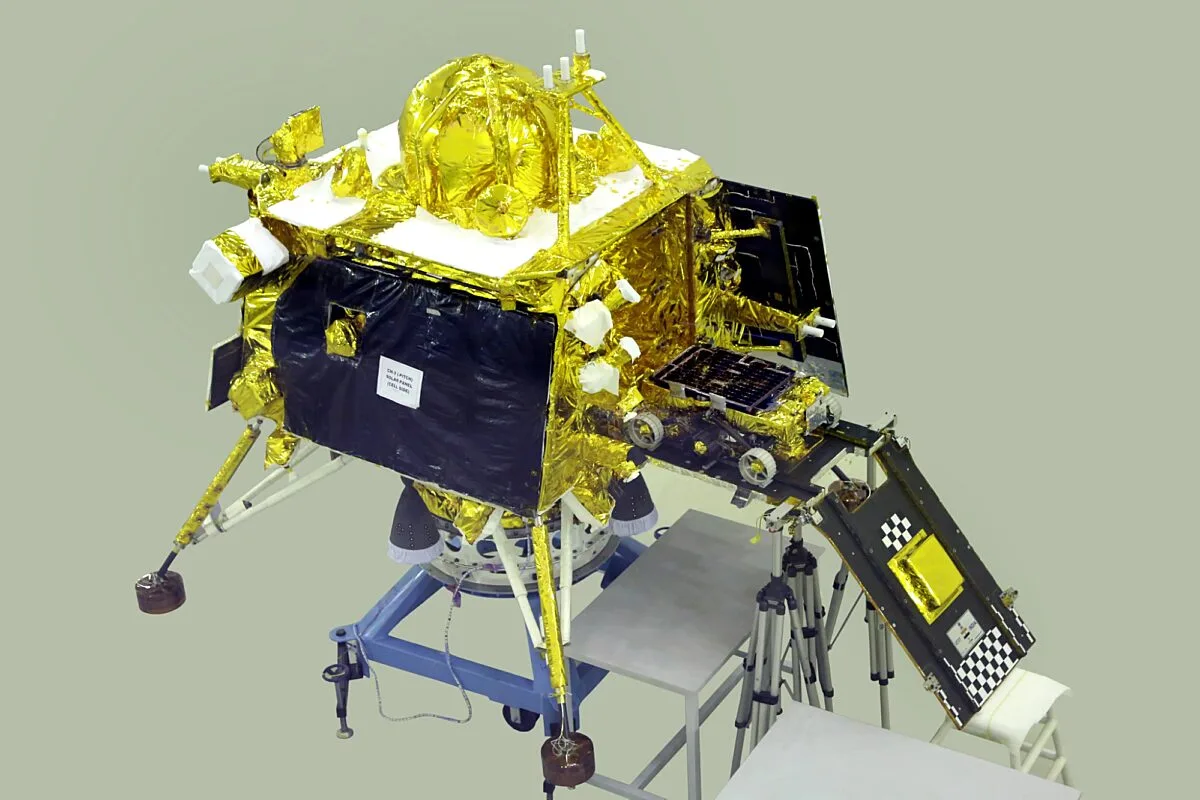Chandrayaan-3, India’s Moon Landing new updates
Table of Contents
What is Chandrayaan-3?
Chandrayaan-3 represents India’s third lunar mission, organized by the country’s space agency ISRO. The primary objective of this mission is to deploy a lander and rover on the surface of the Moon, allowing them to function for approximately one lunar day, equivalent to 14 Earth days. Within the lander, a compact rover weighing merely 26 kilograms (57 pounds) will be transported to the Moon. Both the lander and rover are equipped with scientific instruments designed to explore and analyze the lunar surface.


The design of the Chandrayaan-3 lander and rover closely resembles those utilized in the Chandrayaan-2 mission. In September 2019, the Chandrayaan-2’s Vikram lander impressively descended to within a mere 5 kilometers (3 miles) of the lunar surface, successfully entering a “fine braking” mode that aimed to ensure a gentle landing. The mission’s target was also the Moon’s south polar region, recognized for harboring ice within its perpetually shadowed craters.
Regrettably, an unforeseen software glitch led the Vikram lander astray, resulting in the loss of contact by ISRO officials. Subsequently, NASA’s Lunar Reconnaissance Orbiter identified debris from Vikram scattered approximately 750 meters (half a mile) away from the intended landing site.
Nevertheless, the mission was not devoid of progress: Chandrayaan-2 included an orbiter that continues to conduct lunar studies from an orbital perspective. Among its various scientific roles, the orbiter’s capabilities extend to scanning for the presence of water ice.
Learning from the shortcomings of the Vikram lander, ISRO has upgraded its software and rigorously tested the system to ensure the success of Chandrayaan-3. Unlike its predecessor, Chandrayaan-3 does not incorporate an orbiter. Nonetheless, the propulsion module responsible for ferrying the lander to lunar orbit carries a science instrument that will observe Earth as if it were an exoplanet, generating valuable data for future studies of exoplanets.


How will Chandrayaan-3 get to the lunar surface?
The entire journey, spanning from liftoff to landing, is estimated to span approximately 40 days in order to successfully position Chandrayaan-3 on the lunar surface.
Embarking on its trajectory on July 14, the mission initiated with a launch aboard India’s LVM3 rocket. This robust heavy lift vehicle is proficient in delivering around 8 metric tons into low-Earth orbit. (For comparison, the SpaceX Falcon 9 rocket can transport nearly 23 metric tons to low-Earth orbit.)
The LVM3 will meticulously maneuver the spacecraft, accompanied by an attached propulsion module, into an elongated Earth orbit featuring an apogee, or its highest point, situated approximately 36,500 kilometers (22,700 miles) above our planet’s surface. The propulsion module will strategically elevate its orbit multiple times before making its transition to a lunar orbit.
Upon reaching the Moon, the propulsion module will progressively reduce the altitude of Chandrayaan-3 until it attains a circular orbit with a radius of 100 kilometers (62 miles). At this juncture, the two entities will disengage, enabling the lander to commence its descent and make a gentle touchdown within the Moon’s south polar region. During the instant of contact, the lander’s vertical speed should be less than 2 meters per second, while its horizontal speed will be about 0.5 meters per second (equivalent to roughly 6.5 and 1.6 feet per second, respectively).


What will Chandrayaan-3 do on the Moon?
An accomplished touchdown would signify a remarkable feat for ISRO, propelling them into a select league of nations that have managed to successfully land spacecraft on extraterrestrial bodies. Beyond this pivotal accomplishment, Chandrayaan-3 is equipped with an array of technologies to demonstrate and a multitude of scientific investigations to conduct.
Following the successful landing, one of the side panels of the Chandrayaan-3 lander will elegantly unfold, forming a ramp for the rover. Subsequently, the rover will emerge from the belly of the lander, traverse down the ramp, and embark on its mission of exploration within the lunar terrain.
Powered by solar energy, both the lander and the rover will have a span of approximately two weeks to comprehensively analyze their immediate surroundings. It’s important to note that these components are not engineered to endure the frigid conditions of the lunar night. Communication-wise, the rover will be capable of interacting solely with the lander, which in turn maintains direct communication with Earth. Notably, ISRO has highlighted that the Chandrayaan-2 orbiter can serve as a contingency communications relay if required.
The rover has two payloads:
- Laser-Induced Breakdown Spectroscopes (LIBS): Analyzes the surface’s chemical and mineralogical composition by inducing breakdown through laser.
- Alpha Particle X-ray Spectrometer (APXS): Assesses the elemental composition of the surface. ISRO highlights the rover’s focus on elements such as magnesium, aluminum, silicon, potassium, calcium, titanium, and iron.
The lander has four payloads:
- Radio Anatomy of Moon Bound Hypersensitive Ionosphere and Atmosphere (RAMBHA): Monitors variations in the local gas and plasma environment over time.
- Chandra’s Surface Thermophysical Experiment (ChaSTE): Investigates the thermal characteristics of the lunar surface.
- Instrument for Lunar Seismic Activity (ILSA): Gauges seismic activity at the landing site to delineate subsurface crust and mantle.
- Laser Retroreflector Array (LRA): A retroreflector provided by NASA, enabling lunar ranging studies. Laser ranging involves directing a laser at the reflector and timing the return signal, aiding in distance measurements to the Moon. NASA continues to utilize retroreflectors left from the Apollo program to gauge lunar distances.


